Latest News
20-05-2008 - Grand opening of the "Optical Jets in Radio Galaxies" Web Site
Project outline
With the advent of large ground base telescopes, we started few years ago a survey with the VLT aimed at finding the optical counterpart pf low radio-power hot-spots. We are also using high resolution imaginig data from VLA and HST, to obtain excellent frequency-sampling spectral energy distribution of hot-spots.
The project addresses the physics of these regions by exploring particle acceleration scenarios under conditions of strong shock and Rayleigh-Taylor instabilities. The major enphasis is being put in determining the presumed fundamental role of magnetic fields in these regions, in particular in promoting/extending the life of very energetic electrons responsible for the observed optical light.
The electron lifetime is strictly related to the values of the magnetic field: the lower the magnetic field strength, the longer electron population can radiate. For this reason, in order to achieve a high detection rate of optical emission from hot-spots, we observed with the VLT a sample of low radio-power hot-spots, i.e. most likely dominated by low magnetic field values. Targets were selected from the 2 Jy sample of radio sources listed in Tadhunter et al. (1993, MNRAS, 263, 999). Each of these sources were visually inspected using high resolution radio images. Finally, 10 hot-spots with radio power about 1041 - 1042 erg/s, that is one order of magnitude lower than that of previously investigate hot-spots in the optical wavelengths, but still sufficiently bright to warrant a detection with the VLT were observed.
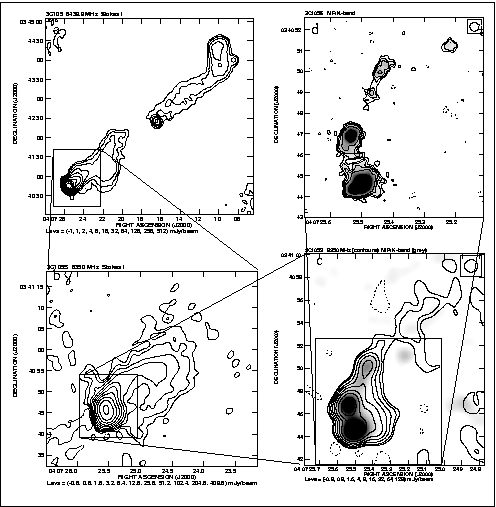
3C 105 South
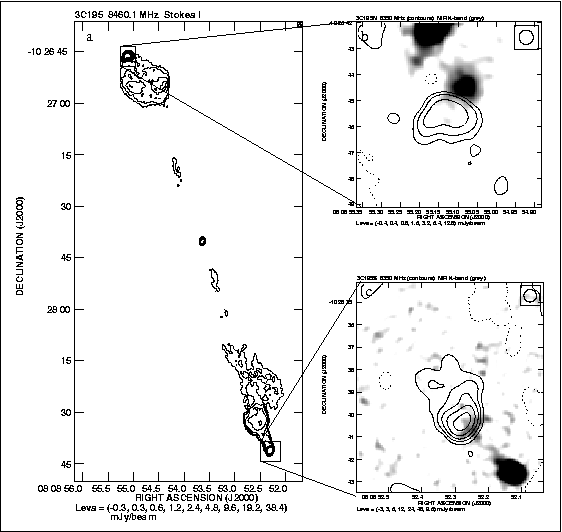
3C 195 North and South
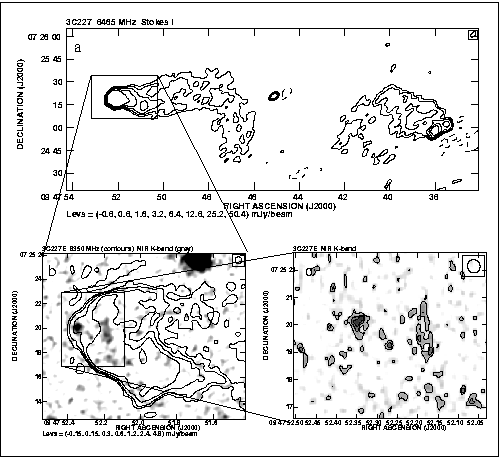
3C 227 East
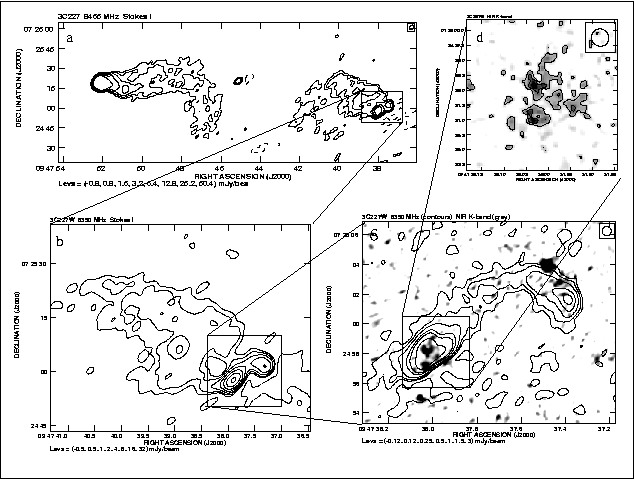
3C 227 West
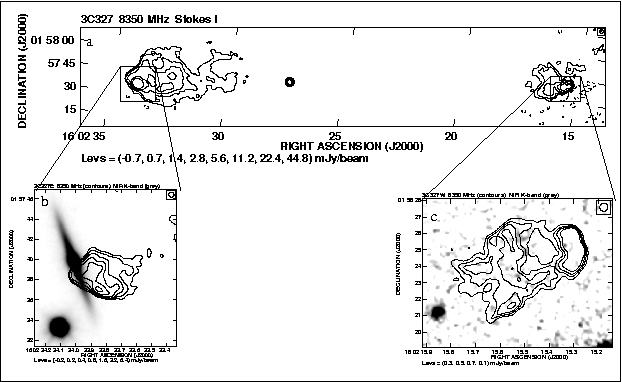
3C 327 East
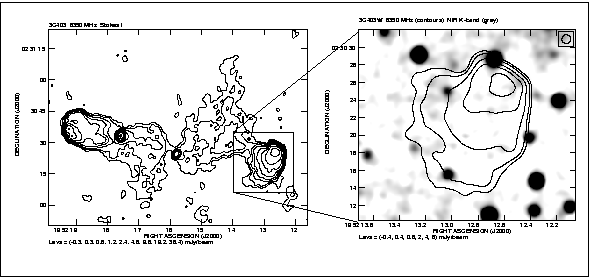
3C 403 West
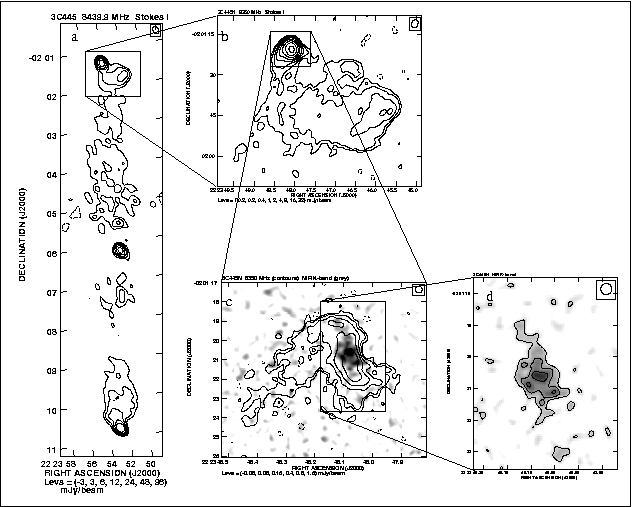
3C445 North
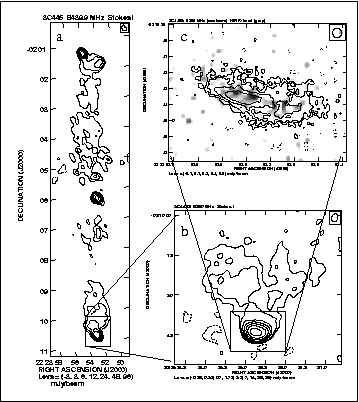
3C 445 South